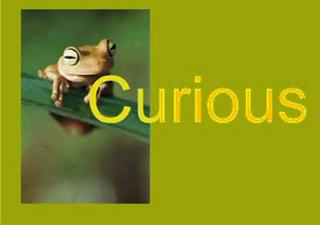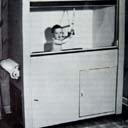This is one of Dr. Erickson's hypnotic scripts to help accelerate learning. Erickson, of course, was the master of this sort of thing. In the hours, days, weeks, or months after you read this you may, in fact, find yourself amazed at how much easier your learning has (and will) become.
“We learn so much at a conscious level and then we forget what we learn and use the skill. You see, I had a terrific advantage over others, I had polio, and I was totally paralyzed, and the inflammation was so great that I had a sensory paralysis too. I could move my eyes and my hearing was undisturbed. I got very lonesome lying in bed, unable to move anything except my eyeballs.
I was quarantined on the farm with seven sisters, one brother, two parents, and a practical nurse. And how could I entertain myself? I started watching people and my environment. I soon learned that my sisters could say “no” when they meant “yes.” And they could say “yes” and mean “no” at the same time.
They could offer another sister an apple and hold it back. And I began studying nonverbal language and body language. 1 had a baby sister who had begun to learn to creep. / would have to learn to stand up and walk. And you can imagine the intensity with which I watched as my baby sister grew from creeping to learning how to stand up. And you don’t know how you learned how to stand up.
You don’t even know how you walked. You can think that you can walk in a straight line six blocks—with no pedestrian or vehicular traffic. You don’t know that you couldn’t walk in a straight line at a steady pace!
You don’t know what you do when you walk. You don’t know how you learned to stand up. You learned by reaching up your hand and pulling yourself up. That put pressure on your hands— and, by accident, you discovered that you could put weight on your feet. That’s an awfully complicated thing because your knees would give way—and, when your knees would keep straight, your hips would give way.
Then you got your feet crossed. And you couldn’t stand up because both your knees and your hips would give way. Your feet were crossed—and you soon learned to get a wide brace—and you pull yourself up and you have the job of learning how to keep your knees straight—one at a time and as soon as you learn that, you have to learn how to give your attention to keep your hips straight.
Then you found out that you had to learn to give your attention to keep your hips straight and knees straight at the same time and feet far apart! Now finally you could stand having your feet far apart, resting on your hands.
Then came the lesson in three stages. You distribute your weight on your one hand and your two feet, this hand not supporting you at all [E. raises his left hand]. Honestly hard work— allowing you to learn to stand up straight, your hips straight, knees straight, feet far apart, this hand [right hand] pressing down hard. Then you discover how to alter your body balance. You alter your body balance by turning your head, turning your body.
You have to learn to coordinate all alterations of your body balance when you move your hand, your head, your shoulder, your body—and then you have to learn it all over again with the other hand. Then comes the terribly hard job of learning to have both hands up and moving your hands in all directions and to depend upon the two solid bases of your feet, far apart.
And keeping your hips straight —your knees straight and keeping your mind’s attention so divided that you can attend to your knees, your hips, your left arm, your right arm, your head, your body. And finally, when you had enough skill, you tried balancing on one foot. That was a hell of a job!
How do you hold your entire body keeping your hips straight, your knees straight and feeling hand movement, head movement, body movement? And then you put your one foot ahead and alter your body’s center of gravity! Your knees bent—and you sat down!
You got up again and tried it again. Finally you learned how to move one foot ahead and took a step and it seemed to be good. So you repeated it - it seemed so good. Then the third step —with the same foot—and you toppled! It took you a long time to alternate right left, right left, right left.
Now you could swing your arms, turn your head, look right and left, and walk along, never paying a bit of attention to keeping your knees straight, hips straight.”
via nlpweekly
Friday, October 07, 2005
Tuesday, October 04, 2005
The return of the aircrib
Australian NLP
 Google video has this
Google video has thisshort (20 minute) video introduction to an Australian NLP Practitioner training. Nice introductory overview.
Subscribe to:
Posts (Atom)
